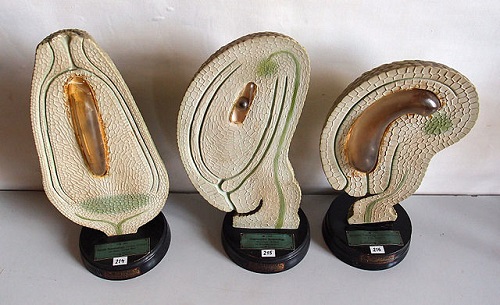Differences Between An Ovule And A Seed
The ovule and the seed are studied under the branch of biology referred to as botany. The ovule is the female gametophyte which after fertilization transforms into a seed. A seed on the other side a seed is an embryonic plant enclosed in a protection outer covering known as the seed coat. It is the product of the ripened ovule which occurs after fertilization. Though the seed and ovule share a number of characteristics; they also differ in one way of another. Some of the noticeable differences between the two include:
- Location in a plant
The ovule is part of the pistil in a plant and is therefore located in a flower and in the ovary to be precise. A seed on the other hand is found in a fully developed fruit. After fertilization, the ovary develops to become the fruit and the ovule develops to a seed.
- Outer covering
The outer covering in both the ovule and seed provide a protection against microorganisms as well as mechanical damage. In the case of the ovule, the outer covering is the integument. The integument protects the nuclear tissue of the ovule. For the seed, a hard covering layer called testa acts as the coat that protects the inner delicate structures of a seed.
- The helium
The helium is a small point found on the surface of both an ovule and a seed. The difference comes in where the helium in an ovule is the point at which the body of the ovule is attached to the funiculus. Totally different with this is the helium of a seed. The helium in a seed is the point at which the seed attaches itself to the fruit. A black scar (helium) is evident on the seed.
- The cotyledon
This is a seed leaf. As it is proven, leaves in plants are essential in that they manufacture and in some store food. In the case of a seed, the cotyledon plays the role of providing food for the seed. The cotyledon is highly packed with starch. In an ovule, the parenchymatous cells named nucellus store some food (energy) that is used by the embryo sac for the development of the ovule.
- The micropile
The micropile is a tiny opening on the surface of an ovule or a seed. The difference of the seed micropile and the ovule micropile is brought about by their different functions. In an ovule, the micropile provides an entrance of the pollen into the ovule structure in order to carry out the process of fertilization. When it comes to the seed structure, the micropile acts an entry point of water and air that are utilized in the process of germination.
- The embryo
In a seed the embryo is the most important part because its cells differentiate and grow into the various tissues that constitute the plant. In an ovule the embryo sac acts as a ‘house’ of the eight nuclei that each plays a role in the process of fertilization. In the embryo sac is where the egg cell which fuses with the pollen to form a zygote is found.
- The funicle
A funicle is a bunch of fibres that attach one part of a plant to another. The funicle in an ovule attaches the ovule to the placenta. In the case of a seed, the funicle is referred to as a stem. The stem attaches the seed to the fruit.
From these illustrations above, it is evident that the ovule and the seed have general differences.
- Difference Between Vascular Cambium and Cork Cambium - November 1, 2023
- Difference Between DevOps and Developer - September 10, 2023
- Difference Between Acute Gastritis and Chronic Gastritis - April 3, 2023
Search DifferenceBetween.net :
Leave a Response
References :
[0]http://www.oakleafgardening.com/glossary-terms/structure-of-seeds.edu
[1]https://en.wikipedia.org/wiki/Ovule

